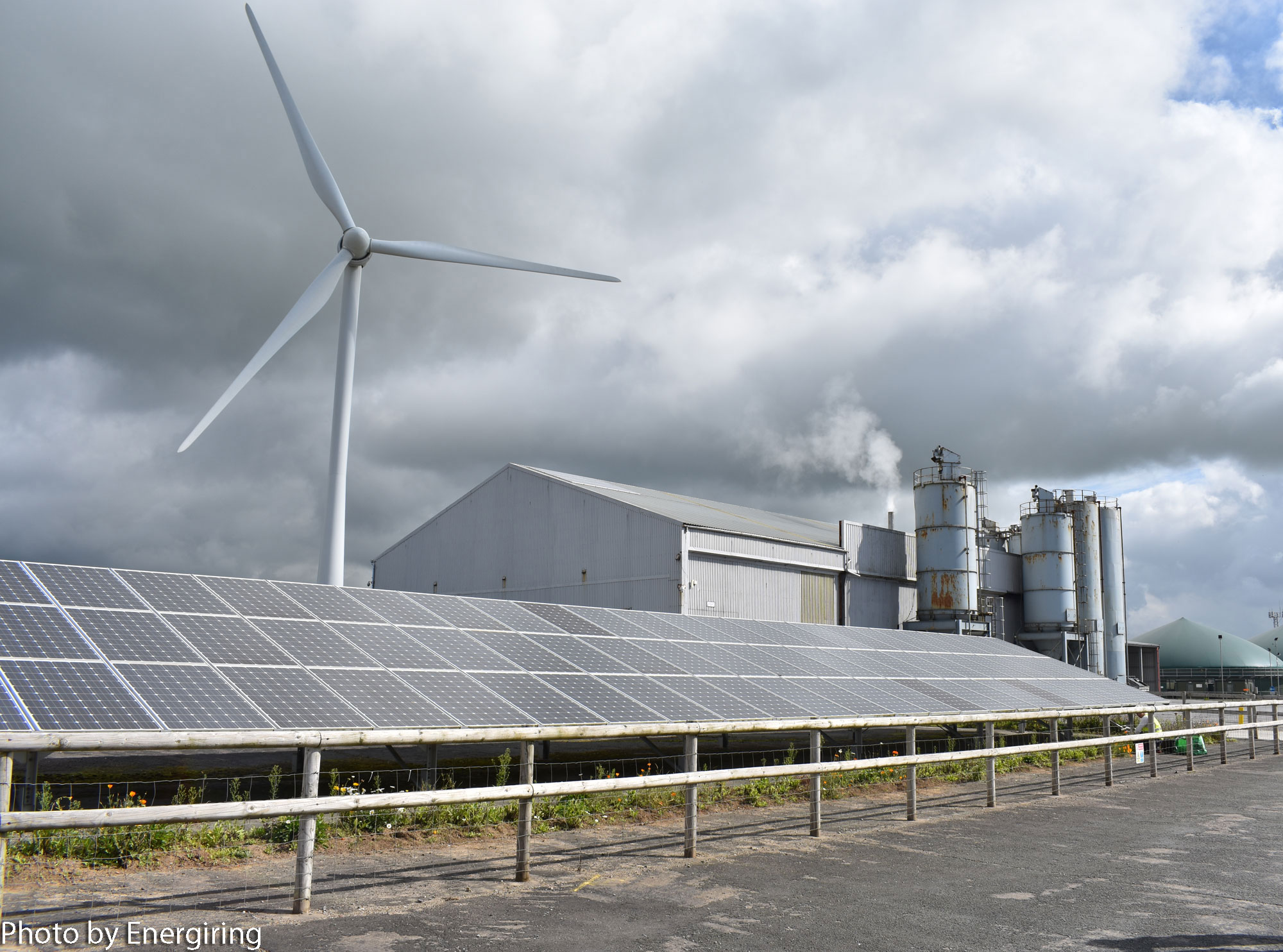The continuing energy transition to more efficiency and less greenhouse gas (GHG) will push public and private end-users and stakeholders to take new roles in the changing energy systems. In this way, using renewable sources for energy (i.e., solar, wind, geothermal, biogas, etc.) as well as flexible micro/small cogeneration of heat and power (CHP) are two of the most significant possibilities for future distributed generation (DG) in a smart energy architecture including both gas network and electricity grid (i.e., Smart Grid).
Nowadays, distributed energy technologies are playing a key role in transforming the way we generate energy. This transformation is well-documented in Europe, but it is also happening elsewhere (the US, Asia & Middle East, etc.). Energiring can help to determine whether on-site renewable/conventional energy generation makes sense for clients’ business.
Energiring offers its customers a wide variety of local generation solutions ranging from renewable resources driven to gas-fired energy resource technologies for commercial (schools, shopping centers, hotels, swimming pools, airports, hospitals, etc.) and multi-family buildings as well as industrial applications. In the end of the day, end-users become partners sharing responsibility for more green energy supply in this way. Lastly, we do commercialization for distributed generation (DG)-related technologies developed by our staff, partners, and customers.

To enable the effective and efficient integration of growing shares of small distributed PV systems into the grid, the idea of PV producers becoming “prosumers” – both producers and consumers of energy – is gaining ground while “self-consumption” is becoming a major driver for the installation of small distributed PV systems. To facilitate this to happen, Energiring addresses:
- Suggestion of solutions for innovative system-integration and power-management for households/larger buildings (in general small distributed PV systems) including storage, particularly addressing the impact of self-consumption on the operation of the grid and the value of PV electricity when aggregated and offered to the wholesale market;
- Based on these solutions, elaboration of business and management models, including cost-benefit analysis and assessing economic feasibility for different sites urban landscape.

By increasing the market share of wind energy systems, Energiring is going to address one of the following specific challenges:
- Developing wind maps, spatial planning methodologies, and tools for new onshore/offshore wind and repowering of old wind farms taking into account environmental and social impacts,
- Adoption of the latest developments in wind energy technology and identifying the bottlenecks for further deployment in each specific region and the regulations which limit the adoption of technological innovation and their deployment possibilities,
- Increasing the social acceptance and support for wind energy specifically in wind energy scarce regions.

Geothermal energy for both electricity generation and heating -direct use- has been produced commercially since 1913, and for decades on the scale of hundreds of MW, and the utilization has increased rapidly during the last three decades. Nevertheless, the way in which a geothermal resource is utilized will ultimately determine whether or not the utilization is sustainable and affordable. Energiring aims at proposing small modular and cost efficient geothermal power plants, and has solutions for 5-MW plants involving providing their technology and EPC service.
We are going to increase the understanding of the socio-economic dimension of geothermal energy, and to promote change in community responses to new and existing geothermal installations. Different technologies and possible technological solutions, with particular reference to reinjection of incondensable gases in deep geothermal plants, are key elements of the environmental and social impact assessment. Specific challenges related to deep and shallow geothermal energy require separate considerations. Risk management strategies and adequate technology selection, for example induced seismicity or emission reduction should be addressed, when relevant.

To facilitating the market roll-out of liquid advanced biofuels and liquid renewable alternative fuels, the main challenge is to enable commercialization of advanced biofuels to help using in small scale distributed generation and GHG reduction. Energiring makes the latest technologies available for cost-efficient biofuels production from both landfill and biogas.

Euro Energy Solutions AS
Oscars gate 27, 0352 Oslo, Norway
Øvre Strandgate 113, 4005 Stavanger, Norway





